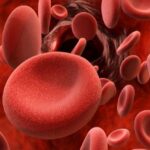PICC, port or Hickman? Make the right choice in oncology
“I think that the biggest issue in our service is choosing which device for which patients,” said Professor Caren Randon, MD, PhD, Head of Service of the Department of Thoracic and Vascular Surgery at the Ghent University Hospital and Fellow of the European Board of Vascular Surgery (FEBVS).1
Many hospitals, such as the Ghent University Hospital in Belgium, base their decision on a flow chart that guides nurses to the correct choice of central venous access device (CVAD) depending on the patient’s treatment needs.
Professor Randon reviewed their hospital’s flow chart against the most recent literature to understand if their process for device choice required updating.1
Read on to discover Professor Randon’s findings from her lecture at the 2022 BD Multidisciplinary Advanced Course on Vascular Access (MACOVA).
PICC lines, Hickman lines or implanted ports?
Professor Randon evaluated 10 studies to compare the complication risks of the three main types of CVADs in oncology: peripherally inserted central catheters (PICC lines), subcutaneously tunneled central catheters (Hickman lines) and implanted ports.1
The literature included systematic reviews, randomised controlled trials, prospective studies and meta-analyses comparing CVADs in the delivery of systemic anticancer therapy.
When compared to implanted ports, the majority of the literature reported that PICC lines were associated with a higher risk of complications, including thrombosis, occlusion, infection, malposition and accidental removal.2-5
In fact, based on the Surface Under the Cumulative Ranking (SUCRA) curve method, one systematic review found that PICC lines had the highest probability of complications, followed by Hickman lines and implanted ports respectively.6
Learn more about the comparison of implanted ports and PICC lines: PICC line or port catheter: Which one for cancer patients?
The CAVA trial: Comparing central venous access devices
Professor Randon highlighted a recent randomised controlled trial from the NHS known as the CAVA trial, in which 1061 adult patients requiring systemic anticancer therapy for 12 or more weeks were observed to compare complication rates and costs between implanted ports, Hickman and PICC lines.3
Overall, similar complication rates were reported for Hickman and PICC lines.3 When compared to both, implanted ports had the lowest complication rates, and even reduced the rate of adverse events by approximately 50%.3
Implanted ports were associated with the highest total cost.3 However, after accounting for dwell time of the devices, the authors reported implanted ports to be slightly cheaper per catheter week when compared to Hickman and PICC lines.3
Following the evidence, the CAVA trial authors concluded that for most patients receiving systemic anticancer therapy, ports were more effective and safer than both Hickman and PICC lines.3
Learn more about choosing the right device: Chemotherapy: How do TIVAPs measure up to other CVADs?
Implanted ports could be used for shorter dwell times, said Professor Randon
Based on guidance from the Belgium Vascular Access Society (Bevanet), the Ghent University Hospital’s previous flow chart had identified implanted ports as the optimal device for oncology patients requiring intermittent irritating products in treatment with long term dwell times of more than 6 months.1
However, following the literature review, Professor Randon presented their new flow chart, with the key difference being the introduction of implanted ports as an option for patients, among Hickman and PICC lines, for dwell times of 1-6 months.1
About BD MACOVA 2022
BD MACOVA 2022 was held in Berlin on the 8-10th June and welcomed over 300 guests and 31 speakers from 35 countries.
The event carries a rich history of engaging leaders in vascular access (VA) to share their experience and insight into vascular access management (VAM) with those looking to expand the use of vascular access devices and services they provide in their hospitals.
This year’s theme was to create a VA community of VAM-bassadors (Vascular Access Management Ambassadors) of change to help improve patient outcomes.
Learn more about MACOVA 2022: Difficult IV access: Is ultrasound-guided cannulation the answer?
#CVAD #Implanted ports #PICC line




